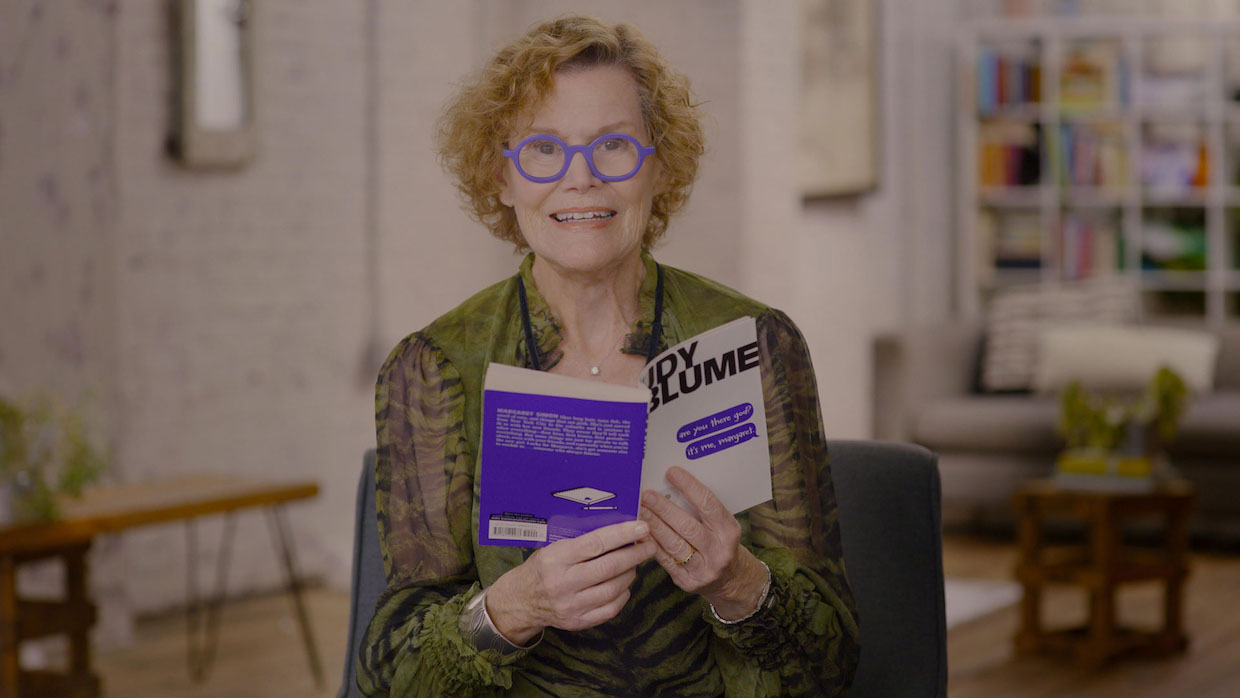 Back to selection
Back to selection
“A Joyful Film About a Complicated, Well-Lived Life”: Editor Tal Ben-David on Judy Blume Forever
 Judy Blume Forever.
Judy Blume Forever. Directors Davina Pardo and Leah Wolchok examine a YA literary icon in their documentary Judy Blume Forever. The author of coming-of-age touchstones like Are You There God? It’s Me, Margaret, Forever and Tales of a Fourth Grade Nothing, Blume has amassed quite a legacy during a career than has spanned more than 60 years and 25 novels.
Editor Tal Ben-David discusses the process of cutting Judy Blume Forever, touching on her appreciation for the author’s work and how she charted her life and career through the decades.
See all responses to our annual Sundance editor interviews here.
Filmmaker: How and why did you wind up being the editor of your film? What were the factors and attributes that led to your being hired for this job?
Ben-David: So many things in production come down to fortunate timing. I was just wrapping up a project and had a window before my next one. I put out a couple of feelers and Meredith Kaulfers from Imagine Docs reached out to me about this film. After speaking with the directors, Davina Pardo and Leah Wolchok, and seeing some of the wonderful footage they had amassed with their team, I was smitten.
Filmmaker: In terms of advancing your film from its earliest assembly to your final cut, what were goals as an editor? What elements of the film did you want to enhance, or preserve, or tease out or totally reshape?
Ben-David: The trickiest part of making a film about a writer is [asking] how do you bring that creative process to life. But what we had were incredible interviews with Judy Blume who, needless to say, is a great storyteller. So my goal became to really let Judy narrate her own story, and bring the audience into her life in a very intimate way. Originally, the concept of the film focussed more on the reader experience of Judy’s books, but we realized that Judy’s life story itself should play a bigger part.
Filmmaker: How did you achieve these goals? What types of editing techniques, or processes, or feedback screenings allowed this work to occur?
Ben-David: I used the interviews that the directors did with Judy as the scaffolding of the film. But the other side of the coin is the amazing impact that Judy’s books have had on generations of young people. For that, the directors interviewed fellow writers and artists, as well as readers who actually corresponded with Judy for years. The editorial process was about weaving these threads together, creating almost a conversation between the author and her readers. Also, it was very important to me to give Judy’s work some cultural context. Judy was a product of the ’50s and ’60s and the changing roles for women in society. Are You There God? It’s Me, Margaret came out in 1970, and was pretty radical at the time for how it spoke about young women’s bodies and experience. Then in the ’80s, there were the book-banning controversies that arose from Reagan-era conservatism. I wanted each decade to have its own flavor, so there was a lot of archival footage and music we were able to incorporate to really bring those periods to life.
Filmmaker: As an editor, how did you come up in the business, and what influences have affected your work?
Ben-David: I happened to come of age when traditional film editing started giving way to non-linear editing. Avid was introduced just as I was getting out of film school. I was a pretty early adopter and that allowed me to basically skip over the assistant editor stage. I started at MTV in the late ‘90s and ran with it from there.
Filmmaker: What editing system did you use, and why?
Ben-David: Avid, the OG.
Filmmaker: What was the most difficult scene to cut and why? And how did you do it?
Ben-David: There’s one section in the film that’s about a long correspondence between Judy and a reader named Karen. At one point, Karen reaches out to Judy during a very difficult time. The story is emotional and delicate and I really wanted to do it justice. It was a real dance between the two of them and it still makes me emotional to watch it.
Filmmaker: What role did VFX work, or compositing, or other post-production techniques play in terms of the final edit?
Ben-David: There are some book excerpts in the film that we wanted to translate to a visual medium. We brought in Martin & Griff, a wonderful UK company, to animate these. They have this beautiful paper-cutout type of style that seemed perfect for evoking the tactile experience of a book.
Filmmaker: Finally, now that the process is over, what new meanings has the film taken on for you? What did you discover in the footage that you might not have seen initially, and how does your final understanding of the film differ from the understanding that you began with?
Ben-David: You mention Judy Blume to someone and often they have a visceral response. Her books were a touchstone for so many people growing up.
I confess that when I came into the film I was not a die-hard Judy stan, but it was amazing to live in her head for a while. She was much less saccharine than I might have assumed, and has a real honesty that maybe only comes with being closer to the end of your life than the beginning. She’s an artist who really carved her own path through the world and made a huge impact. The challenge was to make a joyful film about a complicated, well-lived life. I hope we succeeded.
